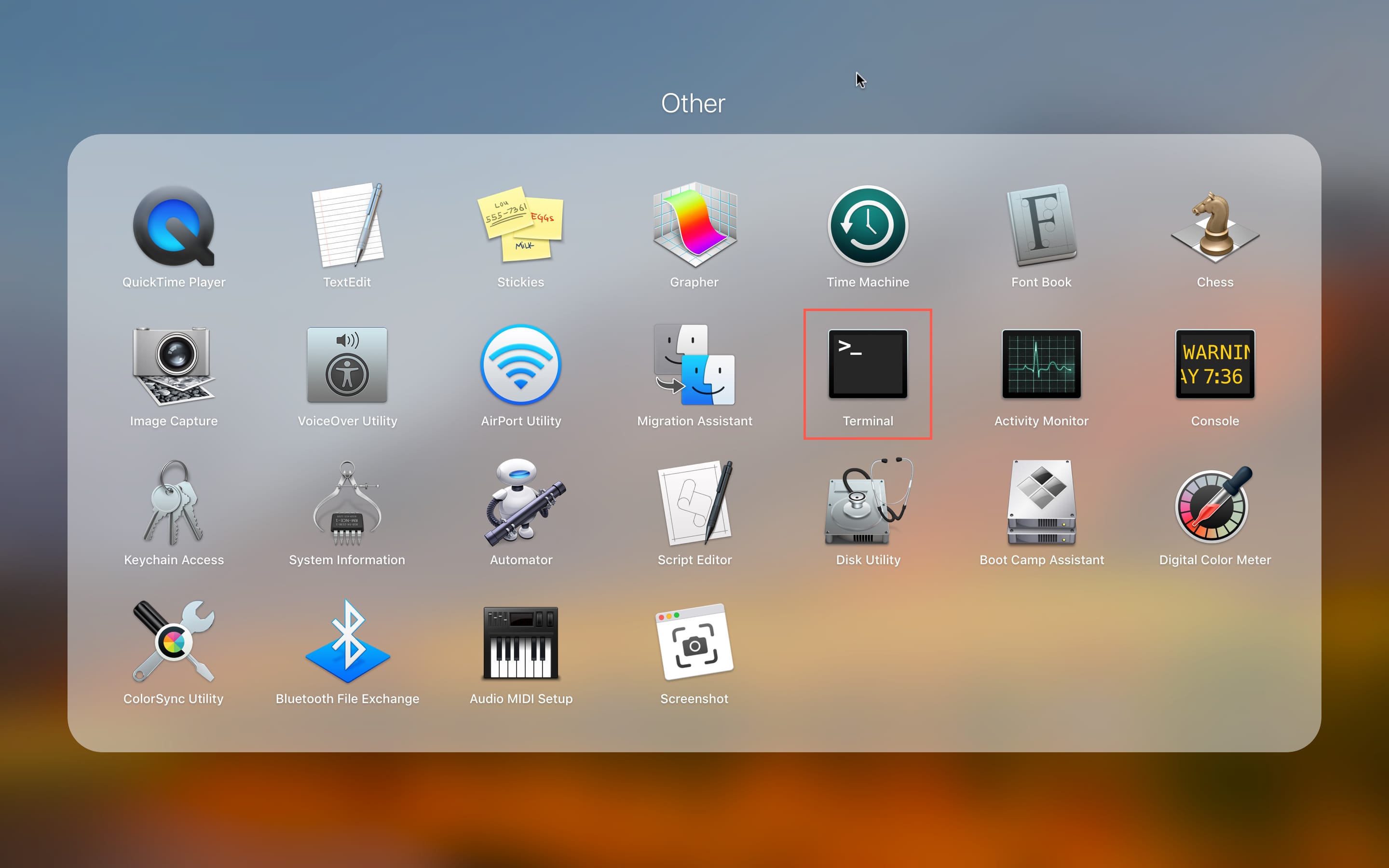

If the part that sucks for you is opening Terminal, then you could try using something like DuckBill, although the only reasons I can think of to run ssh OUTSIDE of Terminal might possibly be for running X Windows server programs or an ssh tunnel. (Disclaimer: you might need to do some shell customization to get that working, but I believe it will work by default in zsh and probably in bash as well.) at the command prompt, and you'll see all the possible completions. If all of the aliases start with the same thing, like 'connect.', then you just type connect. To use the Alt Key Shortcuts in macOS - Open Terminal Preferences Settings Tab Keyboard Tick 'Use option as meta key' Custom Terminal Keyboard Shortcuts. For instance, let's say you have 25 different servers you connect to, and you don't want to remember all the names/aliases you gave them in the.

Select all the files that you want to delete and drag them to the terminal window. zshrc or whatever): alias v='ssh -p 12345 only advantage I can see over other approaches is that (in zsh at least, and I think bash) you can use command completion to see all your servers to connect to. Step 1: Type the command as sudo rm R without pressing the Enter key and control-click on the Trash icon to open it. Add something like this to shell dotfile (.profile or. If the part that sucks for you is typing in a long and complex ssh command, but you don't mind opening Terminal, and for some reason you don't want to use any of the previous answers' approaches, then you can also use aliases or functions.

Just add your host under SSH by clicking the + button in the right column. You can also use the New Remote Connection… menu item in Terminal to connect. command) containing the command line you use to connect to the server ( ssh compy or ssh -i ~/.ssh/my_rsa_key -p 90 It will open in Terminal and run that command. command file (a plain text file with the extension.
Mac osx terminal shortcut password#
If you use key-based authentication and store your key's password in the Keychain, you won't even need to enter a password. IdentityFile is not mandatory if not using a key.Port is not mandatory if using default SSH port.HostName can be either an IP address or an actual hostname.Add an entry for each computer you want to connect to, like this: Host compy The last thing you need to do is drag the script to the right side of the dock.The most *NIX-y answer is to use SSH's features to your advantage.Ĭreate a file named config in ~/.ssh/ (a folder named. sh extension and drag an icon to the top-left corner. Navigate to the /Applications/Shell Scripts/ folder in Finder, right-click on the Jupyter script and click 'info' (or select the script and type command-i). Now you have to make you file executable. So my script is: cd /Users/Maanrijp/ProjectsĬlose nano with control-x and confirm saving your file. I found it quite useful to first let the script go to my working directory and then open an Jupyter Notebook session. So start the terminal and then make the directory, go to the new directory and create a new file called Jupyter.sh. You can pick any location you like, I put my script in /Applications/Shell Scripts/. And it is quite simple to do.įirst create a new shell script with the commands to start a Jupyter Notebook session. But it look much better if you can have a nice shortcut in the dock. Of course it is possible to just open the terminal and type 'jupyter notebook' any time you wish to start a new Jupyter Notebook session.


 0 kommentar(er)
0 kommentar(er)
